Phaseless Terahertz Coded-Aperture Imaging for Sparse Target Based on Phase Retrieval Algorithm
Abstract
1. Introduction
2. System Configuration and Imaging Model
2.1. Proposed PL-TCAI Architecture
2.2. Imaging Model
3. Target Reconstruction Principle and SWFOS Algorithm
3.1. Target Reconstruction Principle
3.2. SWFOS Algorithm
3.2.1. Recovering the Support
3.2.2. Initialization via Truncated Spectral Method
3.2.3. Iteration via Gradient Descent Scheme
3.2.4. Optimizing the Iteration Stepsize
| Algorithm 1: Sparse Wirtinger Flow algorithm with Optimal Stepsize |
| Input: |
| : echo signal intensities vector. |
| : reference signal matrix. |
| : the sparsity of target scattering coefficient vector . |
| : truncation thresholds of initialization. |
| : the maximum number of iterations. |
| Support recovery: |
| Set to include indices corresponding to the largest instances of . |
| Initialization: |
| By 100 power iterations, compute the principal eigenvector , which corresponds to the |
| largest eigenvalue of . Set as , |
| where is obtained by augmenting with zeros at entries not in . |
| Iteration via a gradient descent scheme: |
| , . |
| For to , do |
| Set the optimal stepsize by computing the root of the following: |
| where , , |
| , and . |
| Update |
| End For. |
| Output: |
| : the estimated target-scattering coefficient vector. |
4. Numerical Simulation
4.1. Performance of SWFOS Algorithm
4.2. Application of SWFOS Algorithm in PL-TCAI
5. Discussion
6. Conclusions
Author Contributions
Funding
Conflicts of Interest
References
- Chen, S.; Hua, X.; Wang, H.; Luo, C.; Cheng, Y.; Deng, B. Three-Dimensional Terahertz Coded-Aperture Imaging Based on Geometric Measures. Sensors 2018, 18, 1582. [Google Scholar] [CrossRef] [PubMed]
- Gollub, J.N.; Yurduseven, O.; Trofatter, K.P.; Arnitz, D.; Imani, M.F.; Sleasman, T.; Boyarsky, M.; Rose, A.; Pedross-Engel, A.; Odabasi, H.; et al. Large Metasurface Aperture for Millimeter Wave Computational Imaging at the Human-Scale. Sci. Rep. 2017, 7, 42650. [Google Scholar] [CrossRef] [PubMed]
- Li, Y.B.; Li, L.L.; Xu, B.B.; Wu, W.; Wu, R.Y.; Wan, X.; Cheng, Q.; Cui, T.J. Transmission-Type 2-Bit Programmable Metasurface for Single-Sensor and Single-Frequency Microwave Imaging. Sci. Rep. 2016, 6, 23731. [Google Scholar] [CrossRef] [PubMed]
- Chen, S.; Luo, C.; Wang, H.; Wang, W.; Peng, L.; Zhuang, Z. Three-Dimensional Terahertz Coded-Aperture Imaging Based on Back Projection. Sensors 2018, 18, 2510. [Google Scholar] [CrossRef]
- Zhou, T.; Shen, F.; Xu, K.; Tang, Z.; Wang, J.; Zhang, B.; Ye, D.; Huangfu, J.; Li, C.; Ran, L. Microwave Imaging Customized on Demand Under Random Field Illumination. IEEE Trans. Microw. Theory Tech. 2018, 67, 1148–1156. [Google Scholar] [CrossRef]
- Watts, C.M.; Shrekenhamer, D.; Montoya, J.; Lipworth, G.; Hunt, J.; Sleasman, T.; Krishna, S.; Smith, D.R.; Padilla, W.J. Terahertz compressive imaging with metamaterial spatial light modulators. Nat. Photonics 2014, 8, 605–609. [Google Scholar] [CrossRef]
- Perez-Palomino, G.; Encinar, J.A.; Dickie, R.; Cahill, R. Preliminary design of a liquid crystal-based reflectarray antenna for beam-scanning in THz. In Proceedings of the 2013 IEEE Antennas and Propagation Society International Symposium, Orlando, FL, USA, 7–13 July 2013. [Google Scholar]
- Perez-Palomino, G.; Barba, M.; Encinar, J.A.; Cahill, R.; Dickie, R.; Baine, P.; Bain, M. Design and Demonstration of an Electronically Scanned Reflectarray Antenna at 100 GHz Using Multiresonant Cells Based on Liquid Crystals. IEEE Trans. Antennas Propag. 2015, 63, 3722–3727. [Google Scholar] [CrossRef]
- Chen, S.; Luo, C.; Deng, B.; Qin, Y.; Wang, H. Study on coding strategies for radar coded-aperture imaging in terahertz band. J. Electron. Imaging 2017, 26, 1. [Google Scholar] [CrossRef]
- Li, D.; Li, X.; Qin, Y.; Cheng, Y.; Wang, H. Radar Coincidence Imaging: An Instantaneous Imaging Technique with Stochastic Signals. IEEE Trans. Geosci. Remote. Sens. 2013, 52, 2261–2277. [Google Scholar]
- Arnone, D.; Ciesla, C.; Pepper, M. Terahertz imaging comes into view. Phys. World 2000, 13, 35. [Google Scholar] [CrossRef]
- Luo, C.-G.; Deng, B.; Wang, H.-Q.; Qin, Y.-L. High-resolution terahertz coded-aperture imaging for near-field three-dimensional target. Appl. Opt. 2019, 58, 3293–3300. [Google Scholar] [CrossRef] [PubMed]
- Chen, S.; Luo, C.; Deng, B.; Wang, H.; Cheng, Y.; Zhuang, Z. Three-Dimensional Terahertz Coded-Aperture Imaging Based on Single Input Multiple Output Technology. Sensors 2018, 18, 303. [Google Scholar] [CrossRef] [PubMed]
- Cooper, K.B.; Dengler, R.J.; Llombart, N.; Thomas, B.; Chattopadhyay, G.; Siegel, P.H. THz Imaging Radar for Standoff Personnel Screening. IEEE Trans. Terahertz Sci. Technol. 2011, 1, 169–182. [Google Scholar] [CrossRef]
- Dickmann, J.; Klappstein, J.; Hahn, M.; Appenrodt, N.; Bloecher, H.; Werber, K.; Sailer, A. Automotive radar the key technology for autonomous driving: From detection and ranging to environmental understanding. In Proceedings of the 2016 IEEE Radar Conference, Philadelphia, PA, USA, 2–6 May 2016. [Google Scholar]
- Rogalski, A.; Sizov, F. Terahertz detectors and focal plane arrays. Opto-Electron. Rev. 2011, 19, 346–404. [Google Scholar] [CrossRef]
- Shan, W.; Yang, J.; Shi, S.; Yao, Q.; Zuo, Y.; Lin, Z.; Chen, S.; Zhang, X.; Duan, W.; Cao, A.; et al. Development of Superconducting Spectroscopic Array Receiver: A Multibeam 2SB SIS Receiver for Millimeter-Wave Radio Astronomy. IEEE Trans. Terahertz Sci. Technol. 2012, 2, 593–604. [Google Scholar] [CrossRef]
- Kawamura, J.; Tong, C.-Y.E.; Blundell, R.; Papa, D.C.; Hunter, T.R.; Patt, F.; Gol’Tsman, G.; Gershenzon, E. Terahertz-frequency waveguide NbN hot-electron bolometer mixer. IEEE Trans. Appl. Supercond. 2001, 11, 952–954. [Google Scholar] [CrossRef]
- Yurduseven, O.; Fromenteze, T.; Smith, D.R. Relaxation of Alignment Errors and Phase Calibration in Computational Frequency-Diverse Imaging using Phase Retrieval. IEEE Access 2018, 6, 14884–14894. [Google Scholar] [CrossRef]
- Peng, L.; Luo, C.; Deng, B.; Wang, H.; Qin, Y.; Chen, S. Phaseless Terahertz Coded-Aperture Imaging Based on Incoherent Detection. Sensors 2019, 19, 226. [Google Scholar] [CrossRef]
- Miao, J.; Charalambous, P.; Kirz, J.; Sayre, D. Extending the methodology of X-ray crystallography to allow imaging of micrometre-sized non-crystalline specimens. Nature 1999, 400, 342–344. [Google Scholar] [CrossRef]
- Fienup, C.; Dainty, J. Phase retrieval and image reconstruction for astronomy. Image Recovery Theory Appl. 1987, 231, 275. [Google Scholar]
- Chai, A.; Moscoso, M.; Papanicolaou, G. Array imaging using intensity-only measurements. Inverse Probl. 2010, 27, 015005. [Google Scholar] [CrossRef]
- Gerchberg, R.W. A practical algorithm for the determination of phase from image and diffraction plane pictures. Optik 1972, 35, 237–246. [Google Scholar]
- Candes, E.J.; Strohmer, T.; Voroninski, V. Phaselift: Exact and stable signal recovery from magnitude measurements via convex programming. Commun. Pure Appl. Math. 2013, 66, 1241–1274. [Google Scholar] [CrossRef]
- Candés, E.J.; Li, X.; Soltanolkotabi, M. Phase Retrieval via Wirtinger Flow: Theory and Algorithms. IEEE Trans. Inf. Theory 2015, 61, 1985–2007. [Google Scholar] [CrossRef]
- Chen, Y.; Candès, E.J. Solving random quadratic systems of equations is nearly as easy as solving linear systems. Commun. Pure Appl. Math. 2017, 70, 822–883. [Google Scholar] [CrossRef]
- Kolte, R.; Özgür, A. Phase retrieval via incremental truncated Wirtinger flow. arXiv 2016, arXiv:1606.03196. [Google Scholar]
- Zhang, H.; Zhou, Y.; Liang, Y.; Chi, Y. A nonconvex approach for phase retrieval: Reshaped wirtinger flow and incremental algorithms. J. Mach. Learn. Res. 2017, 18, 5164–5198. [Google Scholar]
- Wang, G.; Giannakis, G.B.; Eldar, Y.C. Solving systems of random quadratic equations via truncated amplitude flow. IEEE T. Inform. Theory 2017, 64, 773–794. [Google Scholar] [CrossRef]
- Wang, G.; Giannakis, G.B.; Saad, Y.; Chen, J. Phase Retrieval via Reweighted Amplitude Flow. IEEE Trans. Signal Process. 2018, 66, 1. [Google Scholar] [CrossRef]
- Cai, T.T.; Ma, Z.; Li, X. Optimal rates of convergence for noisy sparse phase retrieval via thresholded Wirtinger flow. Ann. Stat. 2016, 44, 2221–2251. [Google Scholar] [CrossRef]
- Wang, G.; Giannakis, G.B.; Chen, J.; Akçakaya, M. SPARTA: Sparse phase retrieval via truncated amplitude flow. In Proceedings of the 2017 IEEE International Conference on Acoustics, Speech and Signal Processing, New Orleans, LA, USA, 5–9 March 2017. [Google Scholar]
- Yuan, Z.; Wang, H.; Wang, Q. Phase retrieval via Sparse Wirtinger Flow. J. Comput. Appl. Math. 2019, 355, 162–173. [Google Scholar] [CrossRef]
- Rajan, S.; Liu, X.; Jiang, X. Wirtinger Flow Method with Optimal Stepsize for Phase Retrieval. IEEE Signal Process. Lett. 2016, 23, 1627–1631. [Google Scholar]
- Headland, D.; Niu, T.; Carrasco, E.; Abbott, D.; Sriram, S.; Bhaskaran, M.; Fumeaux, C.; Withayachumnankul, W. Terahertz reflectarrays and nonuniform metasurfaces. IEEE J. Sel. Top. Quantum Electron. 2016, 23, 1–18. [Google Scholar] [CrossRef]
- Cui, T.J.; Qi, M.Q.; Wan, X.; Zhao, J.; Cheng, Q. Coding metamaterials, digital metamaterials and programmable metamaterials. Light. Sci. Appl. 2014, 3, e218. [Google Scholar] [CrossRef]
- Chen, S.; Luo, C.; Deng, B.; Qin, Y.; Wang, H.; Zhuang, Z. Research on Resolution of Terahertz Coded-aperture Imaging. J. Radars 2018, 7, 127–138. [Google Scholar]
- Huang, J. Bandwidth study of microstrip reflectarray and a novel phased reflectarray concept. In Proceedings of the IEEE Antennas and Propagation Society International Symposium, Newport Beach, CA, USA, 18–23 June 1995. [Google Scholar]
- Hoeffding, W.; Robbins, H. The central limit theorem for dependent random variables. Duke Math. J. 1948, 15, 773–780. [Google Scholar] [CrossRef]
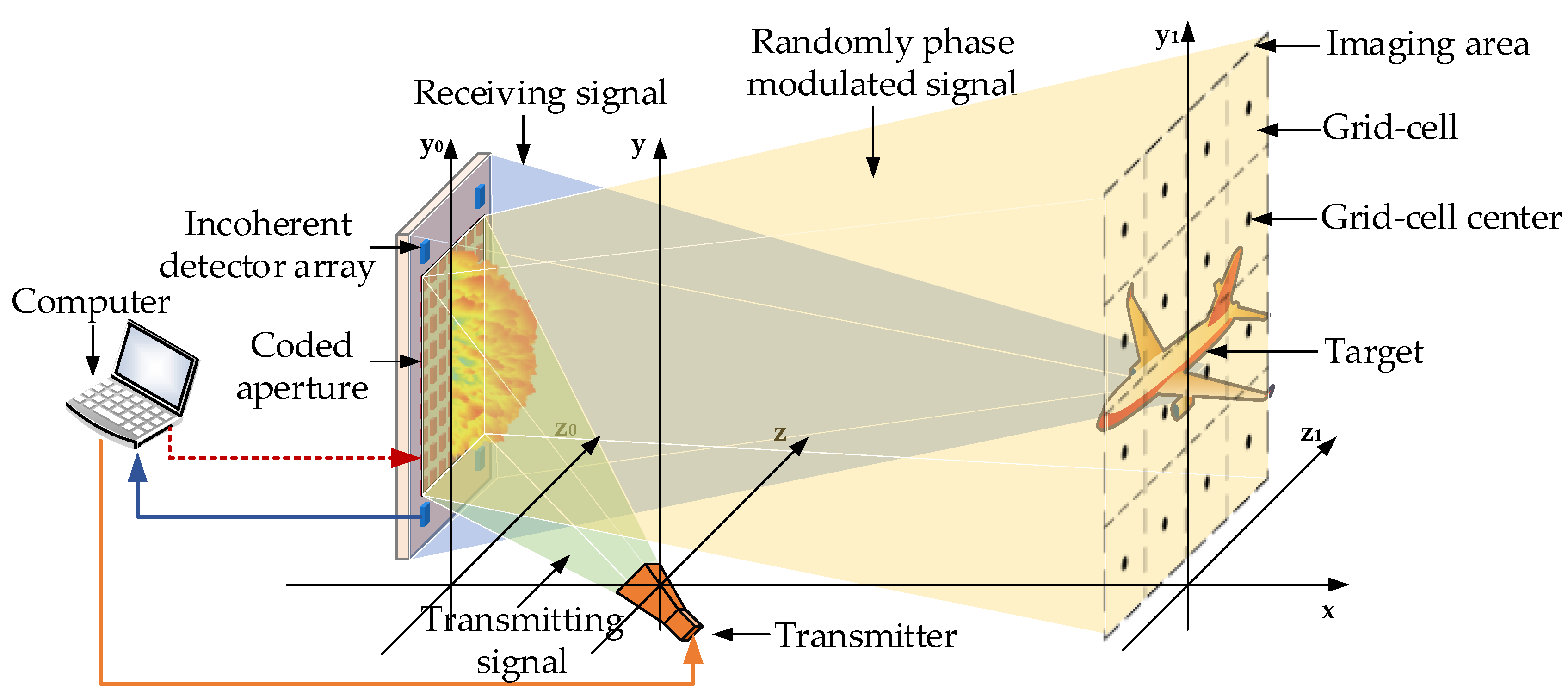
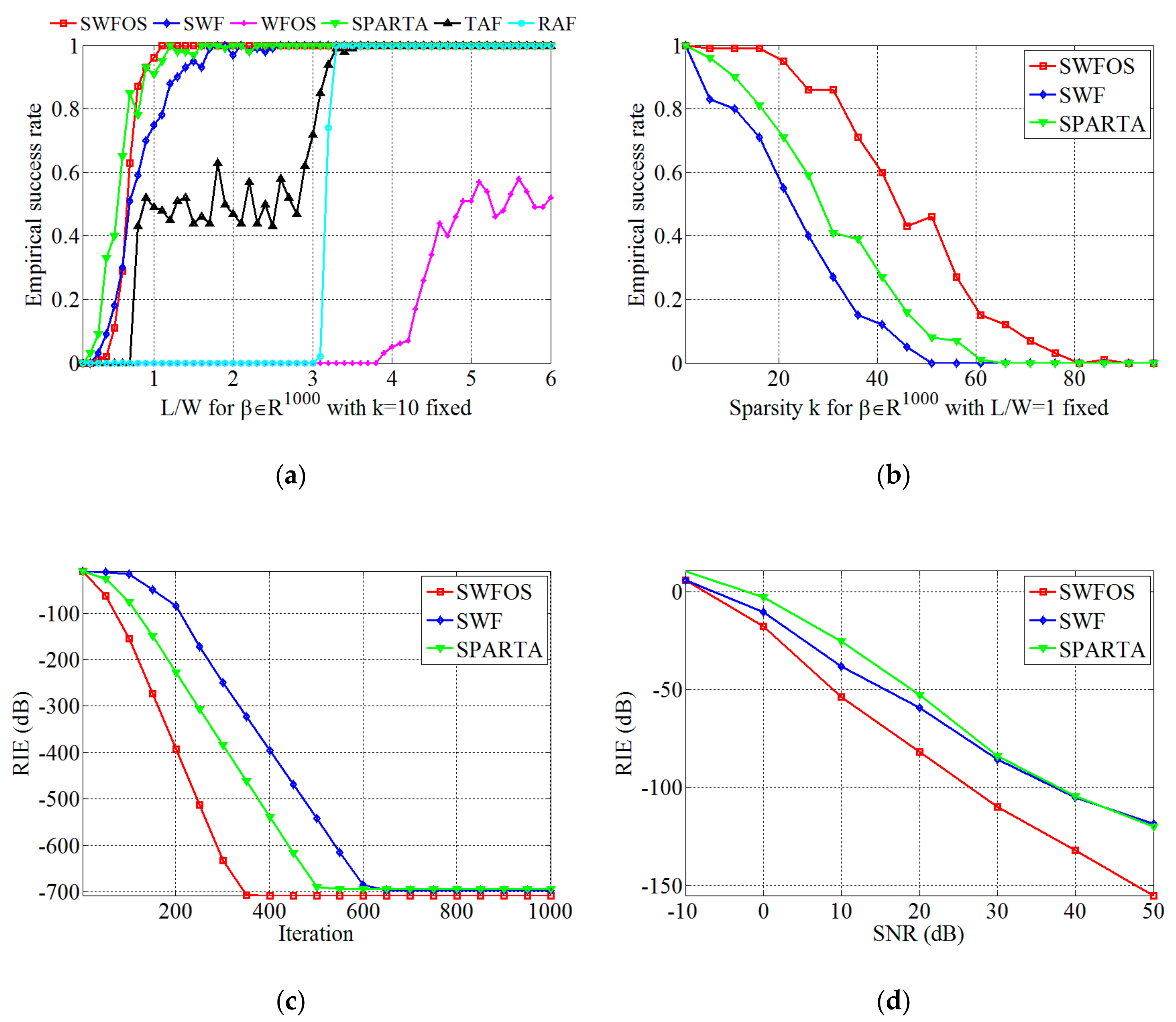
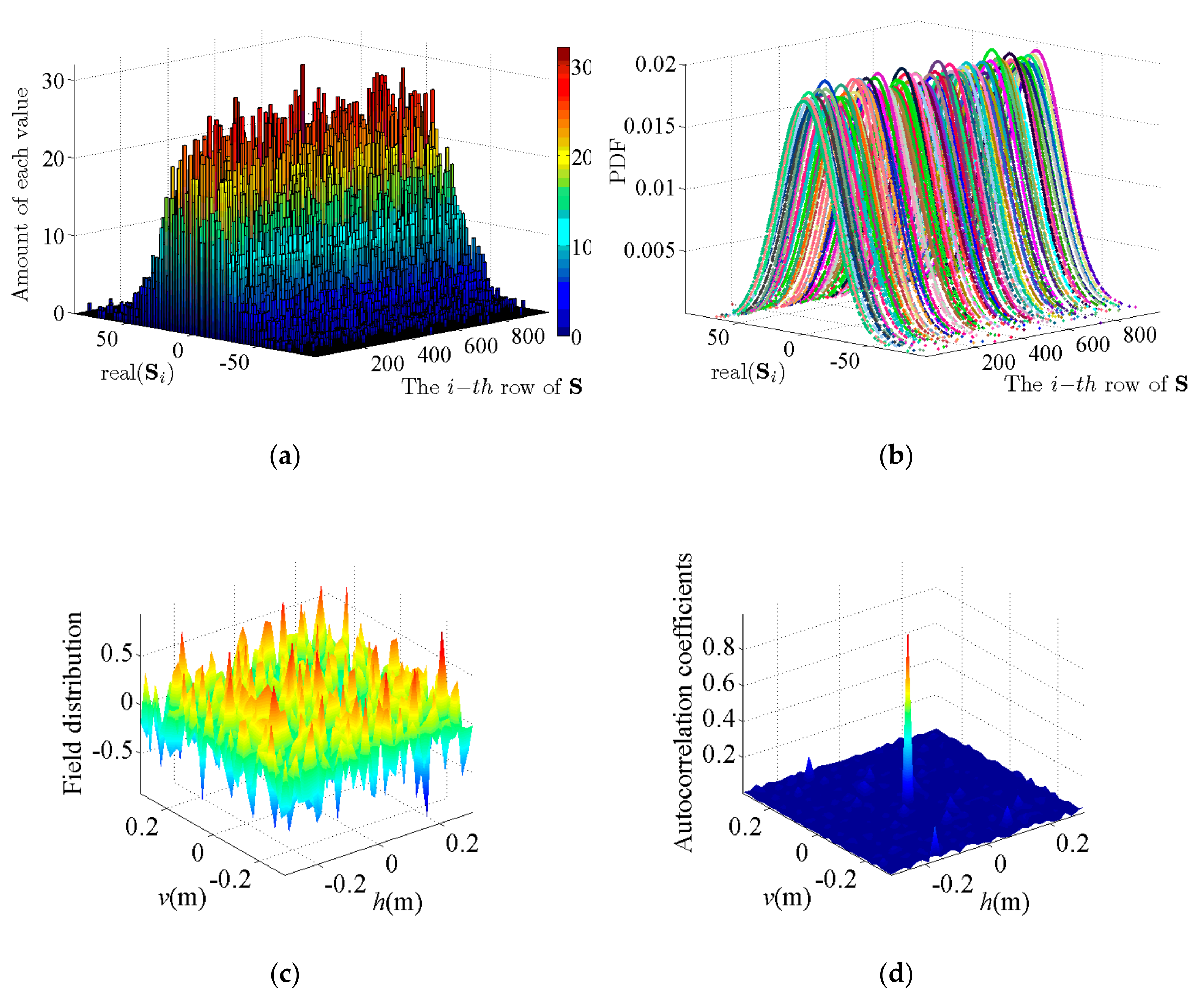
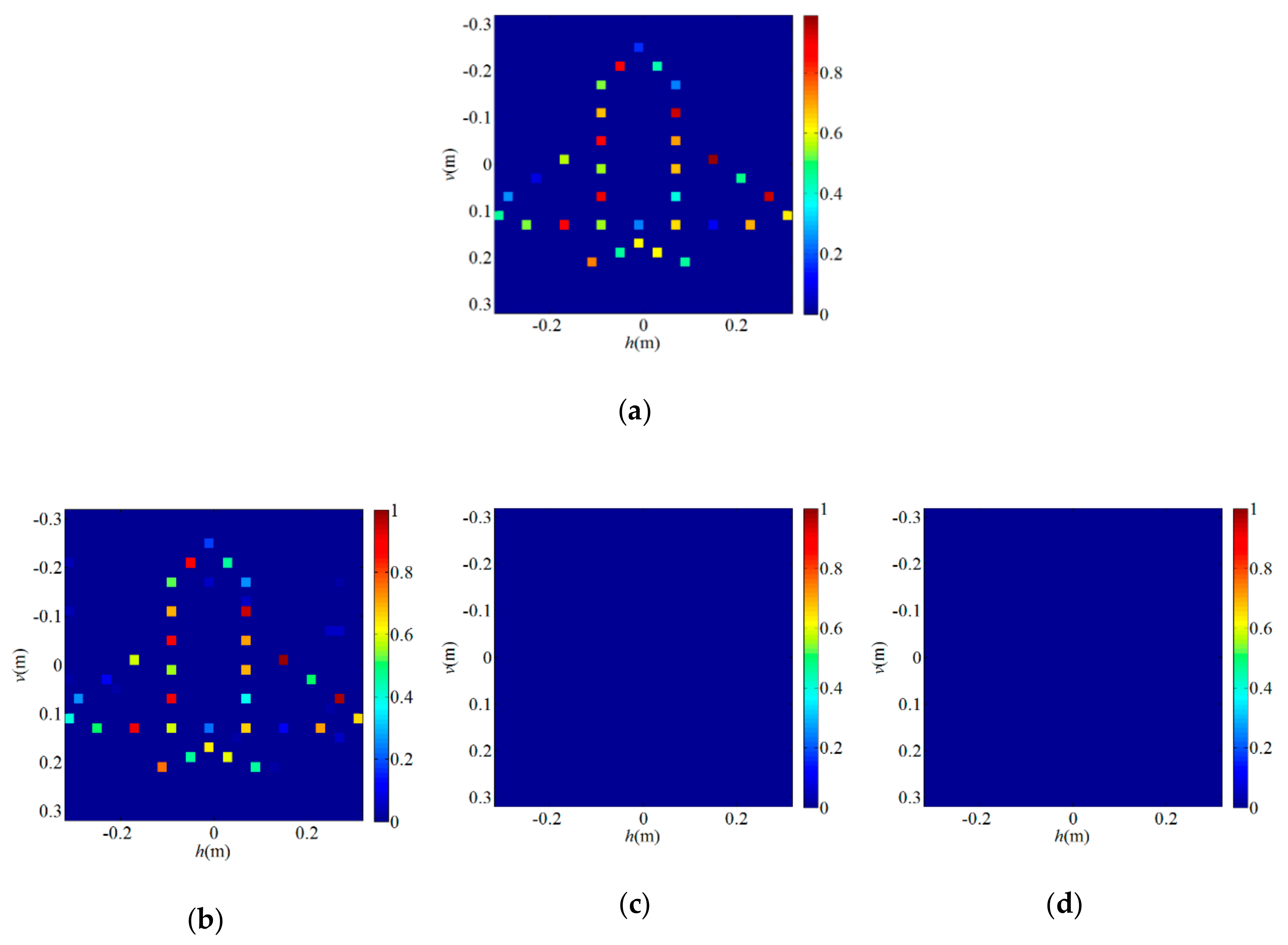
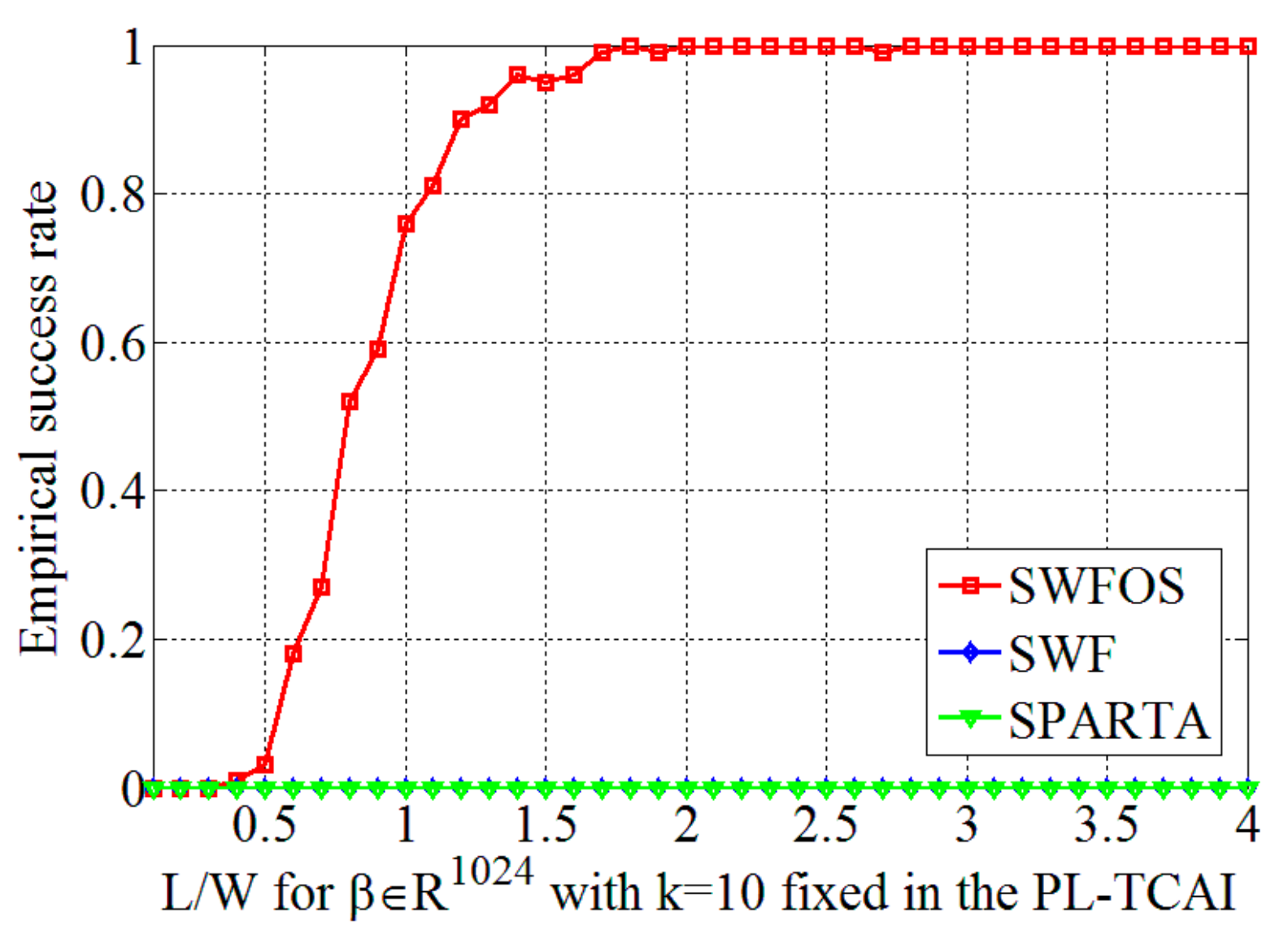



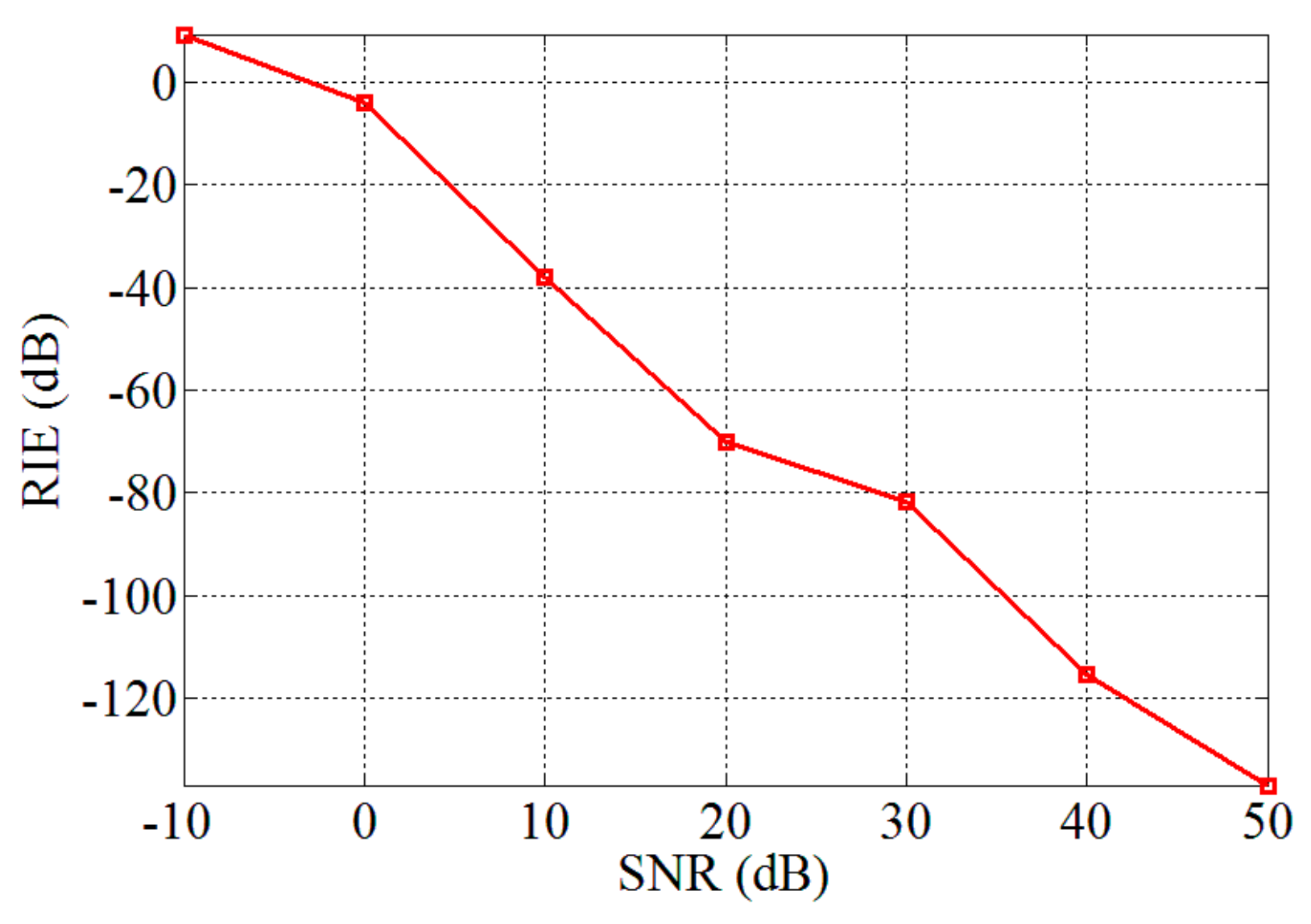
| Parameter | Value |
|---|---|
| Center frequency | 345 GHz |
| Pulse width | 100 μs |
| Bandwidth | 10 GHz |
| Imaging distance | 20 m |
| The size of the coded aperture | |
| The number of elements in the coded aperture | |
| The number of elements in the incoherent detector array | |
| The size of the grid cells in the imaging plane | |
| The number of grid cells in the imaging plane |
| Algorithms | Sparsity k | L/W | RIE (dB) | Runtime (s) |
|---|---|---|---|---|
| SWFOS | 33 | 1.5 | −65.294 | 47.65 |
| WFOS | 33 | 6 | −1.0223 | 174.84 |
© 2019 by the authors. Licensee MDPI, Basel, Switzerland. This article is an open access article distributed under the terms and conditions of the Creative Commons Attribution (CC BY) license (http://creativecommons.org/licenses/by/4.0/).
Share and Cite
Peng, L.; Luo, C.; Deng, B.; Wang, H.; Chen, S.; Dong, J. Phaseless Terahertz Coded-Aperture Imaging for Sparse Target Based on Phase Retrieval Algorithm. Sensors 2019, 19, 4617. https://doi.org/10.3390/s19214617
Peng L, Luo C, Deng B, Wang H, Chen S, Dong J. Phaseless Terahertz Coded-Aperture Imaging for Sparse Target Based on Phase Retrieval Algorithm. Sensors. 2019; 19(21):4617. https://doi.org/10.3390/s19214617
Chicago/Turabian StylePeng, Long, Chenggao Luo, Bin Deng, Hongqiang Wang, Shuo Chen, and Jun Dong. 2019. "Phaseless Terahertz Coded-Aperture Imaging for Sparse Target Based on Phase Retrieval Algorithm" Sensors 19, no. 21: 4617. https://doi.org/10.3390/s19214617
APA StylePeng, L., Luo, C., Deng, B., Wang, H., Chen, S., & Dong, J. (2019). Phaseless Terahertz Coded-Aperture Imaging for Sparse Target Based on Phase Retrieval Algorithm. Sensors, 19(21), 4617. https://doi.org/10.3390/s19214617





